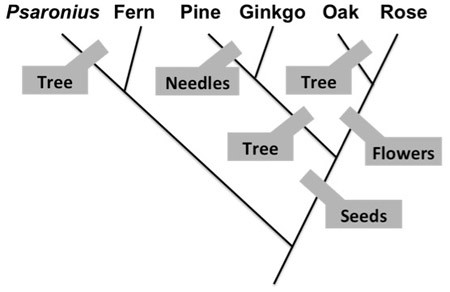 Based on the phylogeny shown, which species is not a tree but has seeds?
Based on the phylogeny shown, which species is not a tree but has seeds?
A. Pine
B. Rose
C. Psaronius
D. Oak
E. Fern
F. Ginkgo
Answer: B
You might also like to view...
In general, RNA molecules
A) comprise the chromosomes. B) serve as messengers to allow the information in DNA to be used to construct proteins. C) entwine with DNA molecules to encode proteins. D) form double helices that encode DNA sequences.
All viruses have genes encoding at least:
a. their coat proteins. b. enzymes required for nucleic acid replication. c. their coat proteins and enzymes required for nucleic acid replication. d. a plasma membrane. e. their coat proteins and a plasma membrane.
Frigatebirds have been observed to pirate food by:
a. perching on feeding pelicans and then stealing fish. b. beating and jostling boobies in flight, forcing them to regurgitate their food - then seizing it. c. preying on other birds. d. both a and b. e. both b and c.
Answer the following statements true (T) or false (F)
1. For the traits Mendel studied in pea plants, each trait, or phenotype, is expressed in only the dominant or recessive form, depending on the genotype. 2. In the ABO blood type system, there are six possible genotypes, but only two possible phenotypes. 3. Environmental conditions affect single-gene traits rarely, but affect polygenic traits often. 4. When the frequencies of all the phenotypes associated with a polygenic trait are plotted on a graph, they form a characteristic bell-shaped curve. 5. Gregor Mendel is sometimes referred to as the "father of genetics" because he influenced the science of genetics more than anyone else.